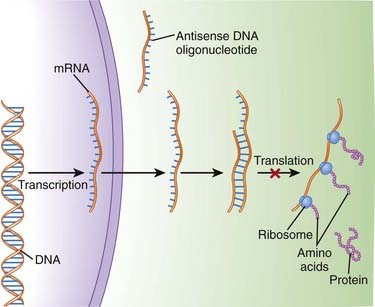Chapter 9 Drug Discovery and Evaluation
Preclinical Process
Drug Discovery
Compound-Centered Drug Discovery
Natural Products
Naturally derived products were the first blockbuster drugs and paved the way for further drug discovery through compound-centered research. Once the efficacy and safety (and potential profitability) of compounds such as penicillin had been established, pharmaceutical chemists set about refining the structures of these agents to achieve specific pharmacologic effects. Table 9-1 lists some common drugs derived from natural sources.
TABLE 9-1 Common Drugs Derived from Natural Sources
| Compound | Source |
|---|---|
| Penicillin | Penicillium mold |
| Morphine | Opium poppy |
| Cyclosporine | Fungus |
Penicillin
Once the chemical structure of penicillin was established, chemists began work on synthesizing new versions, each with its own distinct properties (Figure 9-1). Penicillin-resistant bacteria produce β-lactamase enzymes that attack the penicillin structure. A simple modification of the structure of penicillin created a bulky chemical chain that blocks β-lactamases from the β-lactam site, resulting in the β-lactamase–resistant drug cloxacillin.
Endogenous Ligands
Target-Centered Drug Discovery
An understanding of the genetic basis for disease also provides new targets and will lead to gene-based therapies. The ultimate goal will be to selectively target genes that cause or contribute to disease, and prevent their expression. One of the most promising examples of this target-centered approach is antisense (Figure 9-3).
 The sequences in mRNA are known as the “sense” strand, and when these sequences are known, a complementary “antisense” strand is designed to bind this sense strand in a sequence-specific manner. Once bound, the antisense strand prevents the mRNA from being translated into a protein.
The sequences in mRNA are known as the “sense” strand, and when these sequences are known, a complementary “antisense” strand is designed to bind this sense strand in a sequence-specific manner. Once bound, the antisense strand prevents the mRNA from being translated into a protein. Second-generation antisense agents are designed to signal for destruction of the sense strand, once they have bound to it. The sense strand is destroyed by enzymes (RNAses), allowing the antisense strand to be used again.
Second-generation antisense agents are designed to signal for destruction of the sense strand, once they have bound to it. The sense strand is destroyed by enzymes (RNAses), allowing the antisense strand to be used again. The newest generation of antisense is small interfering RNA (siRNA). These substances behave similarly to second-generation antisense, although they occur naturally in the body. Several siRNA agents are in clinical trials.
The newest generation of antisense is small interfering RNA (siRNA). These substances behave similarly to second-generation antisense, although they occur naturally in the body. Several siRNA agents are in clinical trials.The concept of gene-based therapeutics is covered in Chapter 6.
Tools Used in Drug Discovery
 Combinatorial chemistry
Combinatorial chemistry This is an automated method allows for the generation of a large number of compounds from a small number of precursors. This technology allows pharmaceutical companies to create very large libraries of compounds that systematically cover most or all of the possible variations in structure that may occur around a common precursor.
This is an automated method allows for the generation of a large number of compounds from a small number of precursors. This technology allows pharmaceutical companies to create very large libraries of compounds that systematically cover most or all of the possible variations in structure that may occur around a common precursor.Preclinical Testing
Pharmacokinetics
 A key step in the development process is to determine the route of metabolism for the drug. If metabolized by CYP450 enzymes, the isoenzymes involved will be identified. Tests will also be performed to determine whether the drug is an inducer or inhibitor (or neither) of metabolizing enzymes, again with a focus on CYP450.
A key step in the development process is to determine the route of metabolism for the drug. If metabolized by CYP450 enzymes, the isoenzymes involved will be identified. Tests will also be performed to determine whether the drug is an inducer or inhibitor (or neither) of metabolizing enzymes, again with a focus on CYP450. Being an inhibitor or inducer of metabolizing enzymes is generally considered to be a weakness for a new drug, owing to the potential for drug interactions. Early tests can be performed on isolated enzymes in vitro, but in vivo testing will inevitably be performed to determine the effects of a drug in a whole animal.
Being an inhibitor or inducer of metabolizing enzymes is generally considered to be a weakness for a new drug, owing to the potential for drug interactions. Early tests can be performed on isolated enzymes in vitro, but in vivo testing will inevitably be performed to determine the effects of a drug in a whole animal.Stay updated, free articles. Join our Telegram channel

Full access? Get Clinical Tree









